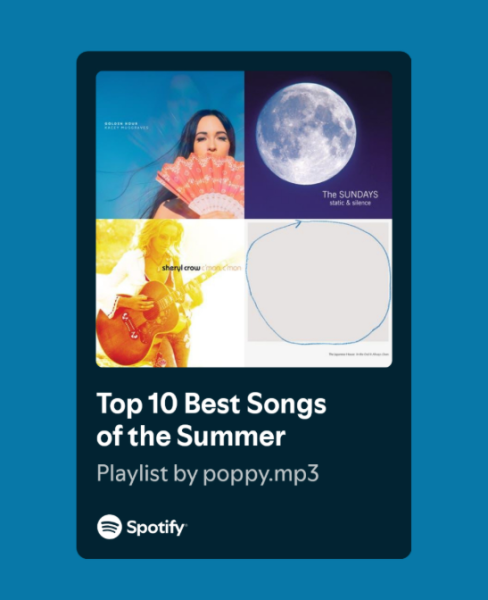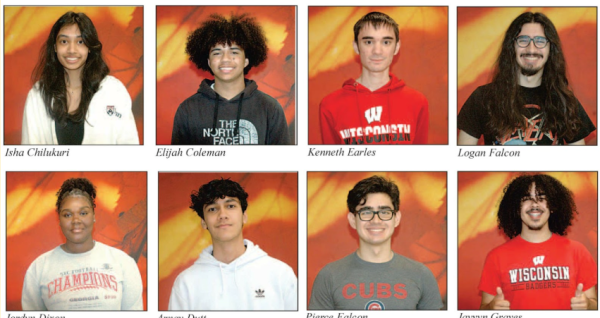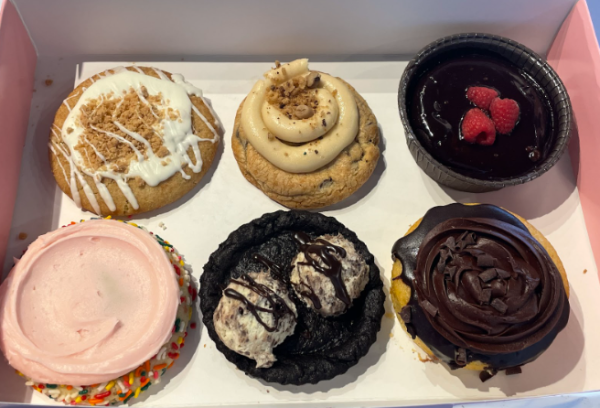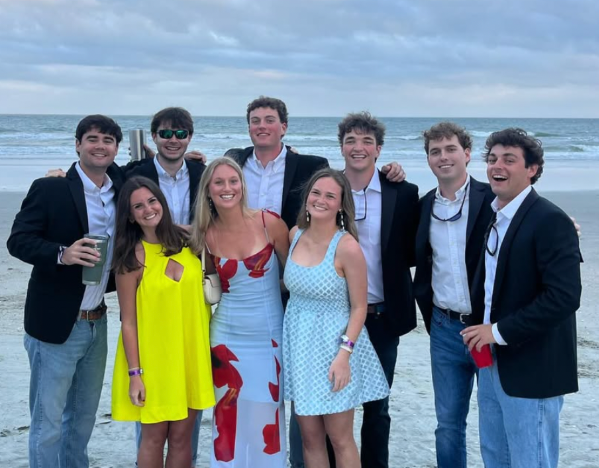Please Stop Telling Me That Syd From I Am Not Okay With This Reminds You of Me
Despite the title of this article, I have to tell you: I’m flattered. Part of me loves being told I remind you of Sophia Lillis’ character on the new Netflix series I Am Not Okay With This. I admire Sophia Lillis as an actor immensely.
So, why am I writing this article? Let me rewind to the beginning of March. I was browsing Netflix and saw that a show called I Am Not Okay With This had risen to number one on Netflix’s Top 10. I paused, startled. For what might be the first time, I saw a teenager like me playing the lead.
Three key features immediately stood out to me about Syd.
1) She has short hair. It may not sound like a big deal, but how many other Netflix Top 10 shows can you name that feature girls with short hair? This simple, surface-level feature immediately made me happy.
2) She likes girls. Syd is a girl who likes other girls, and I rarely see that in mainstream TV. I can seek it out in shows like The Fosters, One Day at a Time, Jane the Virgin, and Everything Sucks. But the TV that all my friends watch, the TV that rises to Netflix’s Top 10, does not normally contain queer characters and plotlines.
3) She’s the lead. Teenage girls who like girls do not get the spotlight. In many ways, they follow the trajectory of the GBF, or Gay Best Friend. The GBF dominated movie and TV screens for years as the trope of what a gay man had to be: a sassy fashionista who was denied character development and a fulfilling plotline. Lesbian best friends often perform the token role of sarcasm and butch, and like the GBF, never have their stories treated as equal to that of the main character. Yet Syd is the lead on I Am Not Okay With This instead of a supporting queer character.
Given all this, I thought I would love I Am Not Okay With This. And I did, so much that I binged the entire series over one weekend. Sure, I liked the intriguing plot, the cast, and the directing that tied it together. That’s what hooked me.
But I kept watching because of the other, indescribable emotion that cropped up when I watched Syd struggle with her family, her superpowers, and her crush on her best friend. It was a mixture of relief and joy at finally having a show to relate to; heartbreak that it had taken so long for this story to exist. In short, I Am Not Okay With This resonated with me in the way only a queer story can.
Then people in my life also watched I Am Not Okay With This. Friends said they immediately thought of me when they saw Syd. That stretched into classmates and acquaintances, who I didn’t really know and who didn’t really know me. Nonetheless, they told me that Syd reminded them of me. I even had a few teachers say Syd reminded them of me.
Beneath the intoxicating relief/joy/heartbreak the show brought me, I began to feel a nagging discomfort. After some reflection, I pinpointed why.
My friends, classmates, and teachers watch I Am Not Okay With This, see Syd, and think of me. And I’m terrified that it’s not because she’s sarcastic, rocks a 90s style, and makes an excellent superhero. I’m terrified that it’s not because I resemble Sophia Lillis. I’m terrified that it’s solely because Syd is a girl who likes girls, and has short hair—a.k.a., she looks like a typical butch lesbian. I’m terrified that those will become Syd’s primary identifying characteristics.
Above all, I’m terrified that those will become my primary identifying characteristics.
When I see a straight white girl or straight white boy character, I don’t instantly think of my straight friends. That’s largely because “straight white girl” and “straight white boy” occupy nearly all mainstream TV leads. I tell my friends a character reminds me of them when that character displays some of my friend’s personality traits. Why can’t I believe that the same thing is happening to me? That my friends, classmates, and teachers see my personality reflected in Syd, and aren’t basing the comparison on butch lesbianism?
The answer relates to a compliment I always get from people. Whether it’s at summer camp, from teachers, or even from close friends I’ve had for years, it keeps cropping up: “You’re not afraid to be yourself.” When I receive that “compliment,” I want to SCREAM.
I hate the subtext loaded into the phrase “not afraid to be yourself.” The subtext is that “yourself,” whatever that representation is, is out of the ordinary. The subtext is that maybe you should be afraid of being “yourself,” and maybe other people who share your identity and represent it in the same way would be afraid in the same situation. But you? Oh, bless your heart. You’re not afraid. The subtext is that our culture identifies queer characteristics as abnormal, as out of reach for those who don’t have the same “courage” to be themselves.
The subtext I hear when I receive that “compliment” is that me liking girls is out of the ordinary. My “butch” appearance is abnormal. Even my friends, who consider themselves LGBTQ allies, treat my queerness as out of the ordinary by telling me, You’re not afraid to be yourself. They don’t get it.
Of course I’m afraid to be myself.
It takes courage just to get out of bed and face myself in the mirror when our society condemns queerness. Gay marriage was only legalized six years ago in the U.S. and remains illegal in many countries. Hate crimes against LGBTQ people happen every day. Homophobia and transphobia are deeply embedded in American culture, and even more deeply rooted in the laws and customs of other countries. Being queer, in many places, means being afraid to be yourself.
I’m lucky. I grew up in a home, school, and community where I don’t have to fear violence or ostracization because I’m queer. Yet my fear roots in another way: I am ashamed of my queerness. Every day, I battle that shame and try to take pride. I look to my queer icons, like Kate McKinnon, Miles McKenna, and Audre Lorde, to remind myself that my identity is not a joke. To remind myself that being queer is beautiful, powerful, and meaningful. To remind myself that I am not worth less because I am queer. Every day, I fight that battle.
I don’t always win.
On the days I don’t win, I long for the privilege my straight friends have. The simple definition of straight privilege is that, culturally and politically, it’s easier for cisgender, straight people to live their lives than queer people. To me, straight privilege means my friends aren’t associated with their sexuality as the most prominent facet of their identity. It means my friends don’t struggle with being ashamed of who they like. It means that they can suffer from love, crushes, heartbreak, and relationship issues because they are, first of all, allowed to be in love—without shame, without stigma, without fear.
How do we reach that same level of acceptance and celebration in queer identity? How do we overcome the homophobia and transphobia that forms the bedrock of the domineering straight narrative?
If today were a losing day, I would tell you: honestly? I don’t see how we could ever get there.
But today, I got out of bed and faced myself in the mirror. I won my battle. Today, I choose to take pride in my queerness. I choose to believe that we can reach that same level of acceptance and celebration in queer identity through representation. Representation, representation, representation. Authentic representation. Representation beyond cisgender, homosexual relationships. Representation beyond the gender binary. Representation outside of the white narrative, the rich and middle-class narrative, the “socially appropriate” narrative. I choose to believe that queer representation can save queer lives.
Syd from I Am Not Okay With This is an amazing queer girl onscreen. I’m happy and grateful that she is part of the media representation that the LGBTQ community deserves. But she is one of the only representations of queer kids that the people in my life are talking about. I felt that pervasive discomfort when people told me that Syd reminded them of me because I’m scared of being boxed into one idea of what it means to be queer.
Ultimately, I’m happy that one piece of my story has been told in the form of Syd. But there is so, so, so much more of the story to tell.









